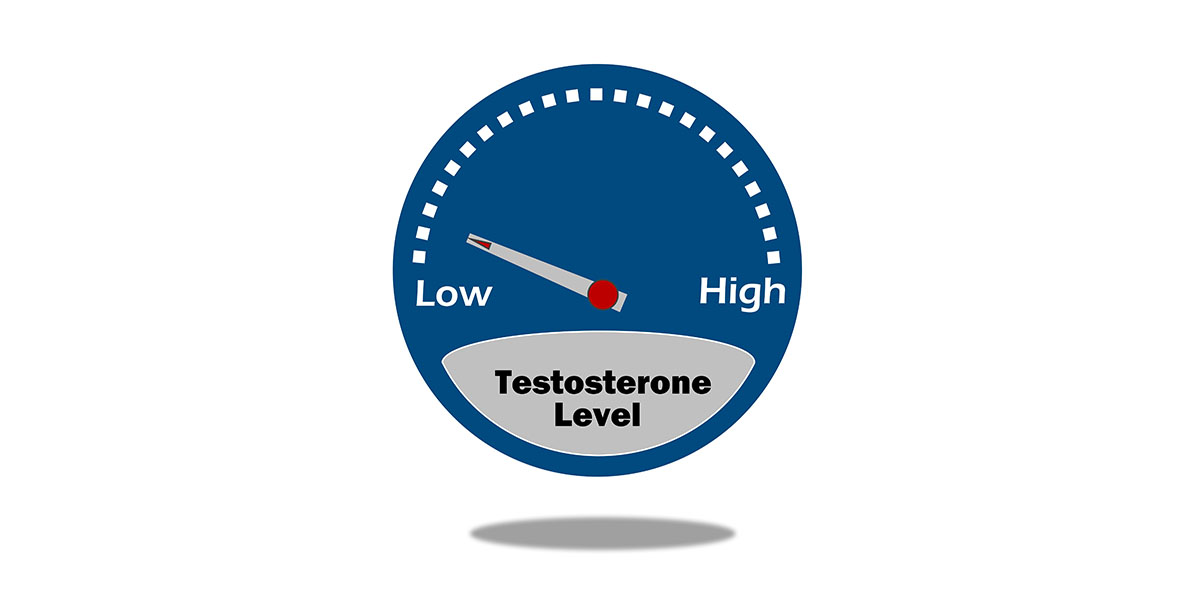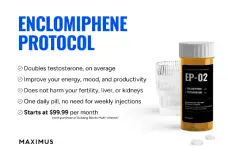Figure 1. Effects of exogenous testosterone on red blood cell production. Testosterone increases EPO production in the kidneys, increasing red blood cell and erythroferrone production in bone marrow, leading to decreases in hepcidin and increased iron uptake, triggering an increase in red blood cells.

Abstract
Introduction
Testosterone replacement therapy is gaining more and more popularity among hypogonadal men. The positive effects on body composition, metabolic functions, and mental well-being can improve the quality of life of many men. However, testosterone can also trigger several side effects, including increases in hematocrit and hemoglobin levels. Exogenous testosterone tends to increase erythropoiesis. The testosterone-induced increase in red blood cells can increase performance via improved transport of oxygen to the body. However, red blood cell overproduction can cause blood clots and severe sequelae such as heart attack, stroke, or pulmonary embolism. These side effects need to be closely monitored in testosterone replacement therapy (TRT) patients. Traditionally, cessation of TRT was recommended for patients with severe polycythemia. However, cessation of TRT can lead to the recurrence of symptoms experienced before TRT. Fortunately, recent innovations in testosterone preparations allow a treatment with less side effects on hematocrit levels.
Objectives
This review focuses on highlighting novel methods to treat hypogonadism while minimizing side effects related to hematocrit levels.
Methods
We identified relevant articles using PubMed and Google Scholar searching for specific terms from 2000-2024.
Results
Elevations in hematocrit levels triggered by testosterone therapy seem to be controversial, some studies advocate noninferior effects as compared to placebo while others found adverse side effects on cardiovascular health. However, the way of administration of testosterone seems to strongly influence the extent of hematocrit increases and can therefore be minimized by choosing the right testosterone preparation.
Conclusion
Depending on the route of administration, testosterone replacement therapy can lead to significant increases in hematocrit and potential cardiovascular incidents. On the other hand, for hypogonadal patients with anemia, testosterone replacement therapy might be beneficial not only for restoring healthy testosterone levels but also red blood cells.
The mechanism by which TRT-induced erythrocytosis occurs is due to the respective roles of hepcidin, iron sequestration and turnover, erythropoietin formation, bone marrow stimulation, and genetic factors.6
A recent meta-analysis showed that all types of testosterone formulations lead to significant increase in hematocrit levels, with intramuscular testosterone enanthate/cypionate leading to significantly higher levels as compared to testosterone patches.7 However, this meta-analysis did not include nasal formulations and did not include comparable numbers of studies for each formulation. The goal of this review is to summarize the newest results in this field, especially regarding the nasal and oral formulations, and give healthcare professionals and patients optimal therapy guidelines.
* Endogenous testosterone levels and hematocrit
* Exogenous testosterone levels and hematocrit and hemoglobin
* Exogenous testosterone levels, hematocrit and blood pressure
Differences among testosterone preparations
1) Injectable testosterone preparations
a) Enanthate/cypionate
b) Undecanoate
2) Oral testosterone preparations
3) Testosterone gel preparations
4) Nasal testosterone preparations
5) Subcutaneous testosterone pellet
We can see that there are major differences among testosterone preparations with regard to hematocrit increases. In general, short acting preparations that are frequently administered and lead to small increases in serum testosterone, seem to have the least side effects, whereas infrequent administration of high dose long-acting preparations seem to have more marked increases in hematocrit. Patel et al., (unpublished data, 2020), even recorded differences in the administration frequency for testosterone cypionate. Dosage levels of 200 mg every 2 weeks lead to hematocrit >54% in 8% of the patients, whereas 100 mg every week led to hematocrit >54% in 1% ofthe patients.
Risk factors for TRT-induced hematocrit increases
Pre-TRT hemoglobin and hematocrit levels contribute to hematocrit elevations, therefore it is very important to monitor these values during TRT in patients with high preTRT hemoglobin and hematocrit levels.
Timeline for TRT-induced hematocrit increases
One study showed that the largest increase in hematocrit happens in the first year after start of TRT, followed by ups and downs, but trending to slowly increase up to 20 years.29
Other methods to treat low testosterone while keeping hematocrit levels within range
1) Clomiphene citrate
2) Human chorionic gonadotropin
Treatment for elevated hematocrit levels
* Phlebotomy
* Medication
* Change of testosterone type
* Potential benefits of TRT induced elevated hematocrit levels
Conclusion
TRT can lead to drastic increases in HCT, potentially leading to cardiovascular diseases. In an update published in 2018 to the “Testosterone Therapy in Men With Androgen Deficiency Syndromes” guideline (2010), the authors recommend against starting TRT in patients with elevated hematocrit levels.53
Injectable testosterone formulations such as cypionate and enanthate are especially susceptible for supraphysiological increases in serum testosterone, potentially leading to elevated HCT levels. Short acting formulations such as nasal spray, topical gel, and oral formulations appear to result in lower increases in serum testosterone, usually within physiological ranges, often leading to weaker elevations in HCT. Indirect methods to increase testosterone such as HCG or clomiphene seem to have very few side effects on HCT. The cut-off number of HCT for discontinuation of TRT, ranges from 52%–54%. However, recent data suggests mortality risk reduction in the higher end of HCT (50%–52%) as compared to lower HCT(46%–49%). Therefore a 54% threshold for TRT discontinuation might be appropriate.
Abstract
Introduction
Testosterone replacement therapy is gaining more and more popularity among hypogonadal men. The positive effects on body composition, metabolic functions, and mental well-being can improve the quality of life of many men. However, testosterone can also trigger several side effects, including increases in hematocrit and hemoglobin levels. Exogenous testosterone tends to increase erythropoiesis. The testosterone-induced increase in red blood cells can increase performance via improved transport of oxygen to the body. However, red blood cell overproduction can cause blood clots and severe sequelae such as heart attack, stroke, or pulmonary embolism. These side effects need to be closely monitored in testosterone replacement therapy (TRT) patients. Traditionally, cessation of TRT was recommended for patients with severe polycythemia. However, cessation of TRT can lead to the recurrence of symptoms experienced before TRT. Fortunately, recent innovations in testosterone preparations allow a treatment with less side effects on hematocrit levels.
Objectives
This review focuses on highlighting novel methods to treat hypogonadism while minimizing side effects related to hematocrit levels.
Methods
We identified relevant articles using PubMed and Google Scholar searching for specific terms from 2000-2024.
Results
Elevations in hematocrit levels triggered by testosterone therapy seem to be controversial, some studies advocate noninferior effects as compared to placebo while others found adverse side effects on cardiovascular health. However, the way of administration of testosterone seems to strongly influence the extent of hematocrit increases and can therefore be minimized by choosing the right testosterone preparation.
Conclusion
Depending on the route of administration, testosterone replacement therapy can lead to significant increases in hematocrit and potential cardiovascular incidents. On the other hand, for hypogonadal patients with anemia, testosterone replacement therapy might be beneficial not only for restoring healthy testosterone levels but also red blood cells.
The mechanism by which TRT-induced erythrocytosis occurs is due to the respective roles of hepcidin, iron sequestration and turnover, erythropoietin formation, bone marrow stimulation, and genetic factors.6
A recent meta-analysis showed that all types of testosterone formulations lead to significant increase in hematocrit levels, with intramuscular testosterone enanthate/cypionate leading to significantly higher levels as compared to testosterone patches.7 However, this meta-analysis did not include nasal formulations and did not include comparable numbers of studies for each formulation. The goal of this review is to summarize the newest results in this field, especially regarding the nasal and oral formulations, and give healthcare professionals and patients optimal therapy guidelines.
* Endogenous testosterone levels and hematocrit
* Exogenous testosterone levels and hematocrit and hemoglobin
* Exogenous testosterone levels, hematocrit and blood pressure
Differences among testosterone preparations
1) Injectable testosterone preparations
a) Enanthate/cypionate
b) Undecanoate
2) Oral testosterone preparations
3) Testosterone gel preparations
4) Nasal testosterone preparations
5) Subcutaneous testosterone pellet
We can see that there are major differences among testosterone preparations with regard to hematocrit increases. In general, short acting preparations that are frequently administered and lead to small increases in serum testosterone, seem to have the least side effects, whereas infrequent administration of high dose long-acting preparations seem to have more marked increases in hematocrit. Patel et al., (unpublished data, 2020), even recorded differences in the administration frequency for testosterone cypionate. Dosage levels of 200 mg every 2 weeks lead to hematocrit >54% in 8% of the patients, whereas 100 mg every week led to hematocrit >54% in 1% ofthe patients.
Risk factors for TRT-induced hematocrit increases
Pre-TRT hemoglobin and hematocrit levels contribute to hematocrit elevations, therefore it is very important to monitor these values during TRT in patients with high preTRT hemoglobin and hematocrit levels.
Timeline for TRT-induced hematocrit increases
One study showed that the largest increase in hematocrit happens in the first year after start of TRT, followed by ups and downs, but trending to slowly increase up to 20 years.29
Other methods to treat low testosterone while keeping hematocrit levels within range
1) Clomiphene citrate
2) Human chorionic gonadotropin
Treatment for elevated hematocrit levels
* Phlebotomy
* Medication
* Change of testosterone type
* Potential benefits of TRT induced elevated hematocrit levels
Conclusion
TRT can lead to drastic increases in HCT, potentially leading to cardiovascular diseases. In an update published in 2018 to the “Testosterone Therapy in Men With Androgen Deficiency Syndromes” guideline (2010), the authors recommend against starting TRT in patients with elevated hematocrit levels.53
Injectable testosterone formulations such as cypionate and enanthate are especially susceptible for supraphysiological increases in serum testosterone, potentially leading to elevated HCT levels. Short acting formulations such as nasal spray, topical gel, and oral formulations appear to result in lower increases in serum testosterone, usually within physiological ranges, often leading to weaker elevations in HCT. Indirect methods to increase testosterone such as HCG or clomiphene seem to have very few side effects on HCT. The cut-off number of HCT for discontinuation of TRT, ranges from 52%–54%. However, recent data suggests mortality risk reduction in the higher end of HCT (50%–52%) as compared to lower HCT(46%–49%). Therefore a 54% threshold for TRT discontinuation might be appropriate.
















